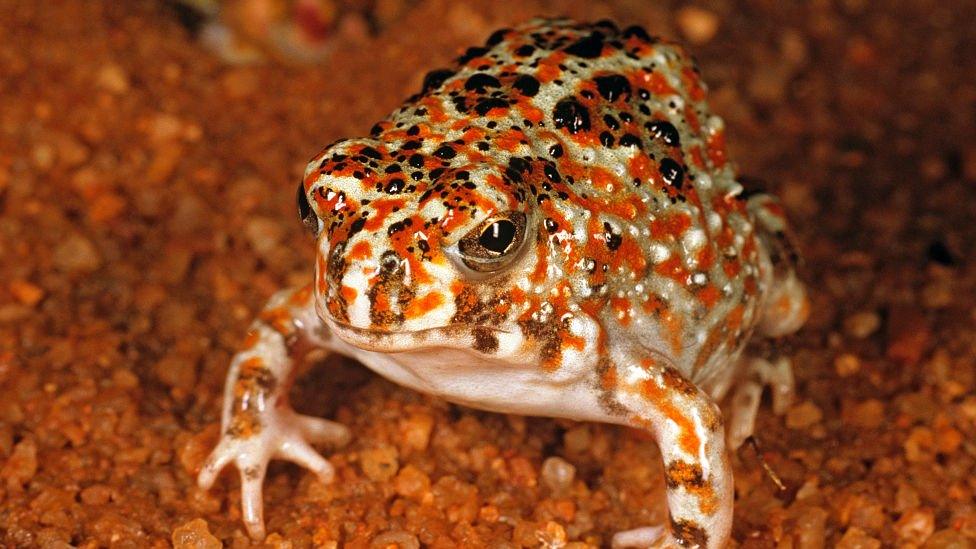Scientists have discovered a new frog which can't croak!
- Published
- comments
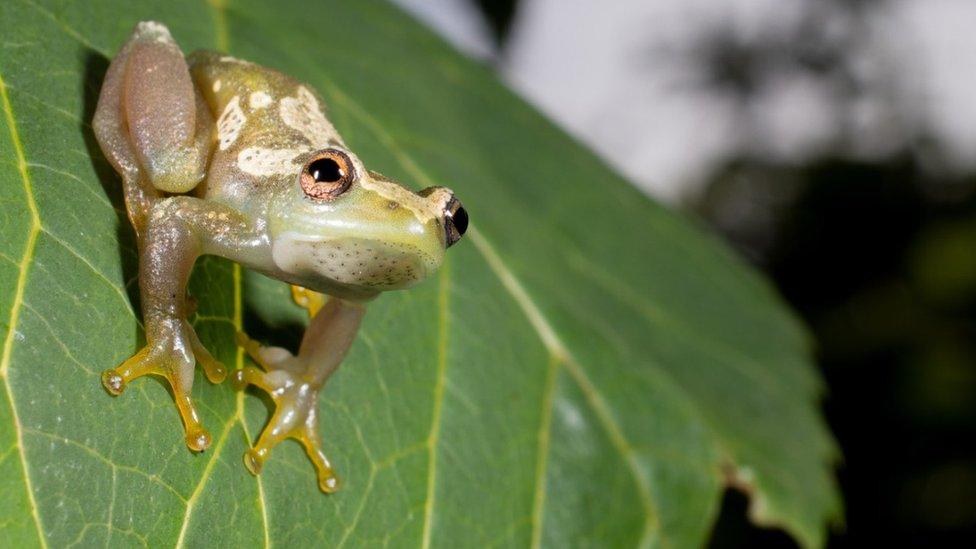
The Ukaguru spiny-throated reed frog isn't able to croak
Frogs are known for their famous croak, but scientists have discovered a new type of amphibian which has a rather unusual characteristic - they don't make any sound.
But what do you call a frog that can't croak... well, the new species has been named Hyperolius ukaguruensis.
It was found in Tanzania's Ukaguru Mountains, and belongs to a group known as spiny-throated reed frogs and the unique name is no coincidence.
The male frogs have tiny spines on their throats, and it's thought these are what they use to communicate instead of the more common croaks or ribbits.
"It's a very odd group of frogs," Lucinda Lawson, who is a conservation biologist and assistant professor of research at the University of Cincinnati, told UC News.
"The male frogs don't call like most other frogs do. We think they may use the spine as something like Braille for species recognition.
"Without a call, they need some other way to recognize each other."
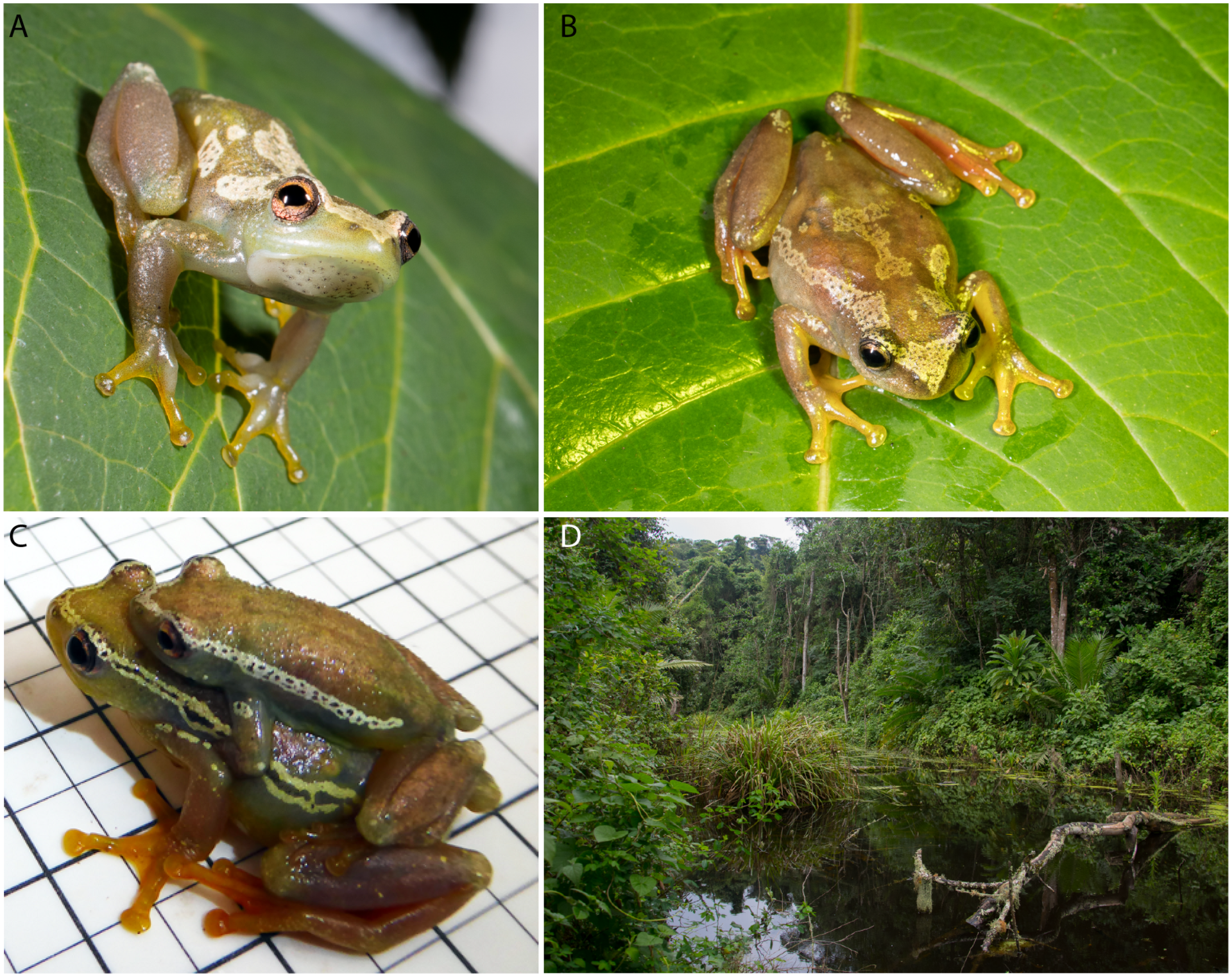
The newly discovered spiny-throated reed frog doesn't look like other species
Researchers came across the Hyperolius ukaguruensis, which is also known as the Ukaguru spiny-throated reed frog, in 2019 while carrying out an amphibian search in Tanzania.
The team identified the frog, which is only about 2.5cm in length, as a spiny-throated reed frog but it didn't look like the other species which had been discovered previously.
"Immediately it was clear that it was a spiny-throated reed frog. But this one was a golden, greenish brown instead of the green colour found in the other species," Lucinda Lawson said.
"Sometimes colour variation doesn't mean anything, but it might here."
There are just seven other silent frog species known to be living in East Africa.
The researchers decided to carry out some tests to see if the frog they'd found was different to other species, which the results confirmed.
The frog's body was also found to have some key differences, with smaller eyes in proportion to its head compared to other spiny-throated reed frogs.
Although the existence of the Ukaguru spiny-throated reed frog is an important discovery, the scientists who worked on this study believe there could be some big threats to its existence.
"The fast population growth in Tanzania means that the mountain forest habitats are under growing threats from people," researcher and co-author on the study Christoph Liedtke said.
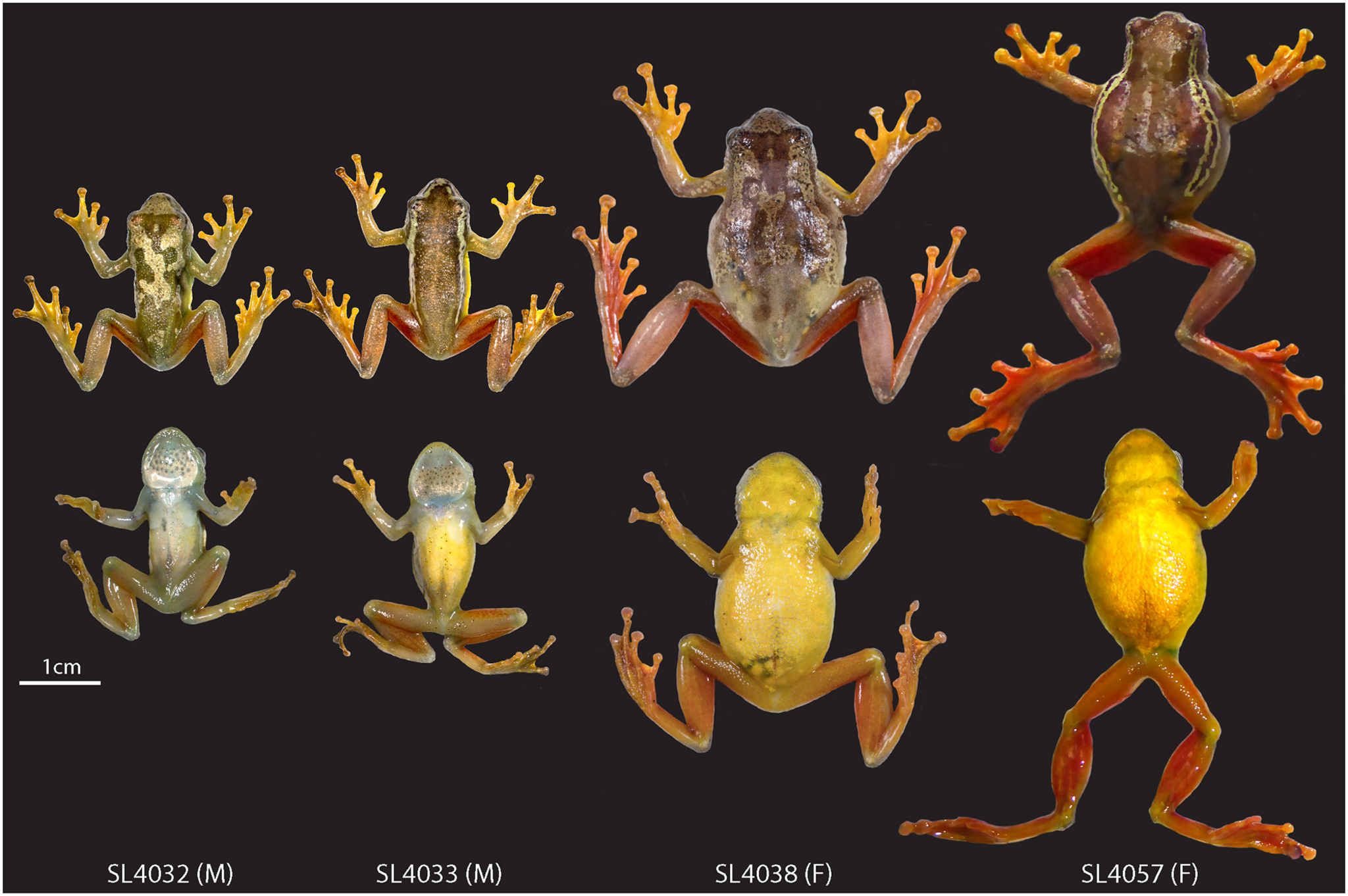
"If a bird's habitat is destroyed, they sometimes can fly to a new forest. But that's hard for amphibians," assistant professor Lawson said.
"If this one species goes extinct, nothing much happens. We just lose one more strand in the fabric of the ecosystem.
"But if you keep pulling out strands, the ecosystem becomes destabilized and the fabric unravels."
The researchers hope the new Ukaguru spiny-throated reed frog will help them learn much more about parts of the world where there is lots of diversity and how to better protect the species living there.
"Knowing how many species exist and where is critical to conservation," Christophe Liedtke said.
- Published19 April 2022
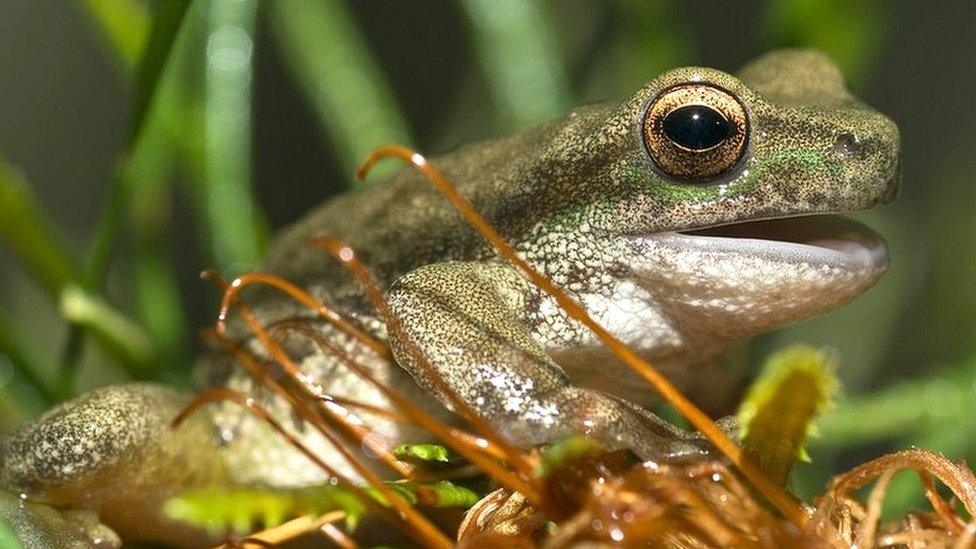
- Published1 March 2022
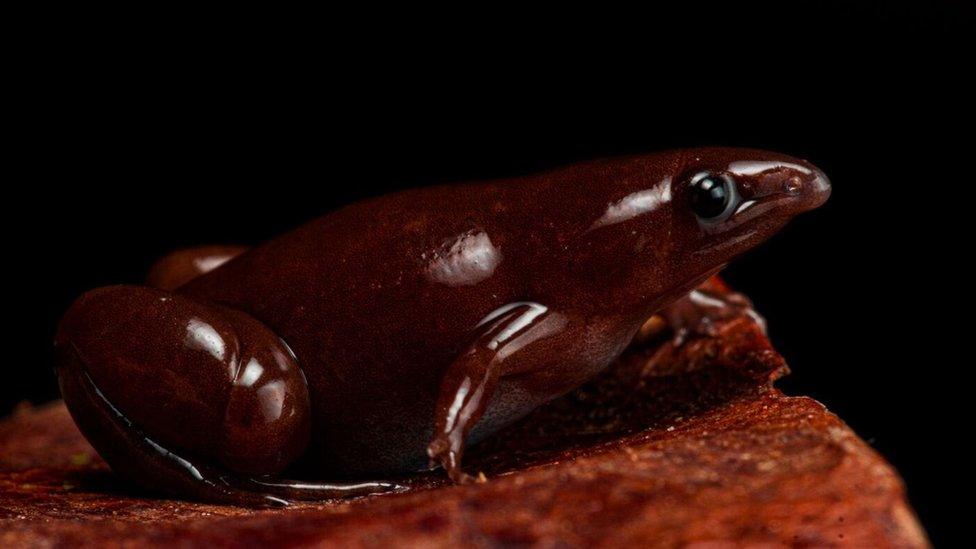
- Published8 December 2021
